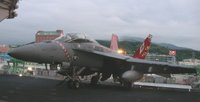Substitled "How Little Things Can Make a Big Difference," this book by Malcolm Gladwell is a fascinating exploration of how trends get started. He discusses so many phenomena, from how Paul Revere successfully aroused the Colonials in the Boston area to fight the British to how removing graffiti from the subways of New York helped to make the transportation system safer.
To quote from his conclusion: "The world--much as we want it to--does not accord with our intuition. . . . To make sense of social epidemics, we must first understand that human communication has its own set of very unusual and counterintuitive rules.
"What must underlie successful epidemics, in the end, is a bedrock belief that change is possible, that people can radically transform their behavior or beliefs in the face of the right kind of impetus. This . . . contradicts some of the most ingrained assumptions we hold about ourselves and each other. We like to think of ourselves as autonomous and inner-directed, that who we are and how we act is something permanently set by our genes and our temperament. . . . [But] to look closely at complex behaviors like smoking or suicide [he gives the example of an epidemic of suicides in Micronesia] or crime is to appreciate how suggestible we are in the face of what we see and hear, and how accutely sensitive we are to even the smallest details of everyday life. That's why social change is so volatile and so often inexplicable, because it is the nature of all of us to be volatile and inexplicable."
The book has helped remind me what social beings we are, and to what a huge extent our actions often depend on our surroundings and the actions of others. A trivial example is how, in Japan, people are very obedient about not crossing the street against a red light. However, when traffic is extremely light or non-existent, if one person crosses, others will follow suite, as though they've been given permission.
Another more serious example is the difference I saw in reactions to the Vietnam War and the Gulf War in the 90s. I was in the Boston area both times. During the former, the Peace Movement was huge, with thousands marching down Massachusetts Avenue and congregating on the Boston Common.
During the latter, I was on my way to a class one evening near the Town Square in Waltham and saw a small group of peace activitists, maybe only half a dozen, on a street corner holding a sign against the war. This was at a time when it seemed that almost every building was plastered with yellow ribbons, and the few who had the courage to speak out were glared at, if not worse. Tears sprang to my eyes as I passed by; I wanted to show my support by joining them, but could only say, "Thank you."
Where were the thousands who had joined the protests in 1969? Surely many of them were still in the area. Yet, it was easier to join a popular movement than an unpopular one.
Willing to see the Green Party finish imploding; willing to give it a push
-
That, the header, is the main reason, other than her own hypocrisy, I keep
bagging on Green Party presidential candidate and likely nominee Jill
Stein. T...
16 hours ago












